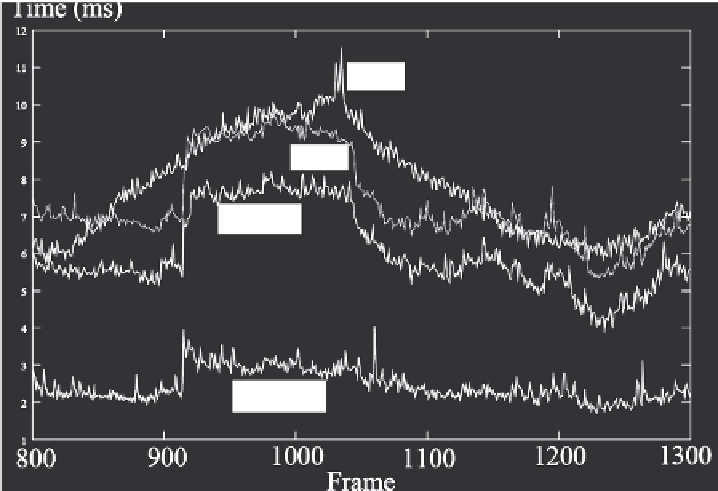Graphics Reference
In-Depth Information
Time (ms)
12
11
VFC
10
9
CHC
8
NOHC
7
6
5
4
3
CHC++
2
1
800
900
1000
1100
1200
1300
Frame
FIGURE 8.10
Experiment results from Scherzer, Yang, and Mattausch's [69] research on
exploiting temporal coherence in real-time rendering.
Furthermore, we investigated and developed control frameworks using model-based
and model-less approaches for real-time rendering. The frameworks discussed apply
to conventional PID controls for linear processes, piecewise linear controls, and the
use of soft computing techniques such as neuro-fuzzy control for setting up systems
without formal model definitions.
Our experiments show that it is possible to model real-time rendering accurately.
We performed further experiments that validated the performance of our control
system utilising both PID and fuzzy controllers in different arrangements.
8.3 FUTURE WORK
We hope our research will inspire appreciation for and wider adoption of theoretic
controls for computer graphics applications. Based on the initial objectives we set
and met in our research, we hope that future work that may generate interest in some
related topics.
First, a global geometry manager for rendering software would be desirable for
handling 3D scenes involving many different objects. More specifically, a managing
device could resemble the common hierarchical scene graph by which objects and
sub-objects are organised in a contextually meaningful manner. The function of this
geometry manager is to provide better resolution control for the geometry load of
a 3D scene by determining which objects must scaled appropriately based on their
geometric constructs.



Search WWH ::

Custom Search